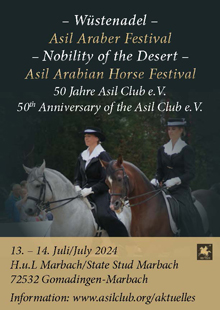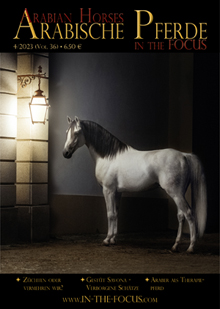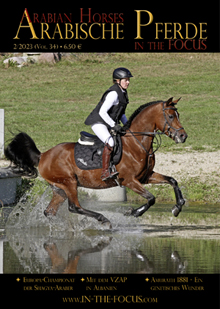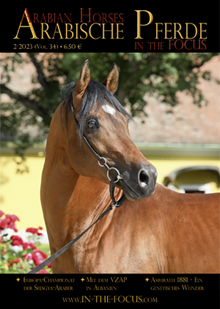Feeding the horse athlete is one of the headaches of many endurance rider. Some horses eat too much, others are fuzzy eaters… but all need some individual adaptation of the “standard food plan” to their individual metabolism and requirements by the demanded effort. That’s where “the eye of the owner feeds the horse”.
Let’s have a look at some particularities of the horse’s digestive system:
- For all mammals, the major fraction of the energy produced from its nutrition is needed to keep the body-temperature at the required level for normal functioning.
When a horse is moving more than normal and, even more, when carrying or pulling a weight, extra energy supply is required for muscle contraction, which will essentially be obtained by chemical transformation of stored body-fat. - The horse is primarily a grass-eater and not a cereal-eater! In nature, the horse spends the major part of his time grazing (in alternation to rather short resting = digestion-periods) and fulfils all his needs out of a diet of a variety of grass and other available plants. If not, the species will disappear from that environment… If the available (natural or quality enhanced) supply from grazing exceeds the necessary energy for “maintaining” the body functions of the horse in its natural environment, the excess energy will be transformed into and stored as body-fat.
- The stomach of a grass-eater has a small volume (less than 18 l) as the passage of the food through it is fast (approx 2 hours). As the horse keeps grazing, its stomach is rarely empty and the high quantity of acid produced by it for the “chemical disinfection” of the food thus does not harm the mucosa of the interior wall of the stomach.
- The natural diet of horses (lots of fibres) also implies a slow transit in the further gut (total passage time is over 48 hours!) and the concept of its intestines and digestion process is adapted to this by the bacterial digestion in the (proportionally enormous) caëcum (blind gut). This organ, designed for permanent filling, should also not be “left empty”
Since domestication and with it a certain work load, the horse’ grazing time has been decreased and we impose a cereal-diet on our herbivore animal, just to satisfy us. Indeed, the excess in energy produced by this high-energy diet (oats, barley, maize, bran, peas…) can be used for work in the lapse of time gained by the reduced grazing needs.
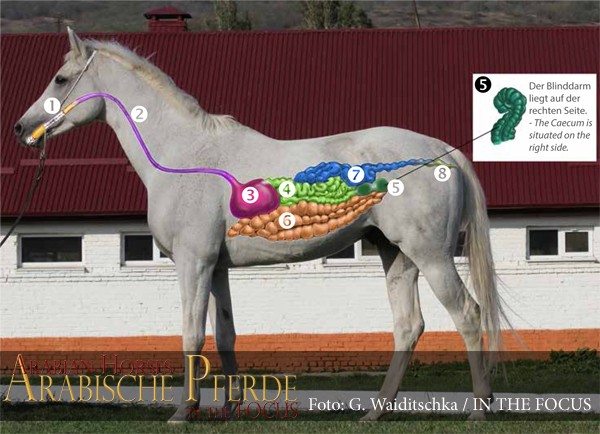
Das Verdauungssystem des Pferdes /
Digestive System of the Horse:
1 – Zähne / Teeth, 2 – Speiseröhre / Esophagus, 3 – Magen / Stomach, 4 – Dünndarm / Small Intestine, 5 – Blinddarm / Caecum, 6 + 7 Dickdarm / Large Colon, 8 – Enddarm / Rectum
This modified way of life has a couple of consequences on the digestive track:
The teeth: – Incisors normally used for “cutting” the grass, are less worn down by less grazing and may grow too long.
Molars have an increased grinding function (grain!) and the slightest imperfection in the match of the molars of the upper and under jaw is enhanced and soon makes our horse to develop hooks on its teeth.
Our domesticated / stabled horses thus sometimes need dentists (although not as often as some practitioners tend to imply!) The extreme case would be horses fed with “mash” only.
The stomach: – when stabled without hay or straw during a longer period, or during long work-outs, the empty stomach continues the production of acid. The inner lining of the stomach is thus prone to acid attack which can create sensitive spots and surface lesions. If the specific bacteria are around (they are anywhere!) stomach ulcers may develop, especially when the horse is tired or stressed and thus less resistant to bacteria.
In endurance, one should avoid too long loops (preferably not longer than two hours without food input!) or too short “resting periods” between the loops, inhibiting sufficient food input and thus leaving the stomach empty.
Stabled horses need a permanent supply of something to nibble.
The guts: – The small intestine is charged with the “bio-chemical” digestion of the larger molecules (proteins, lipids, vitamins, etc)
The caecum transforms the cellulose of the fibres into sugars by bacterial activity.
The large intestine absorbs all the transformed material into the blood-circulation, the exceeding water is extracted during the transit in the last portion of the intestine.
The microbial flora existing in the caecum and necessary for the transformation of fibers, should never be depleted, because it is very difficult to restore a balanced flora after it was depleted. Therefore, the guts of a horse should never be “empty” of fibres, such as in the form of grass, hay or straw…
Flat race horses are kept on a fibre-arm diet to loose a maximum of “useless” weight to obtain the typical “greyhound” profile (picture). As their effort is short in time, there will be little burn of body-fat compared to endurance horses, which are supposed to keep on going for hours and hours.
The liver: being a grass-eater, the horse’ organism is not designed to absorb much fat. Especially animal fat cannot be absorbed by its guts, exception made for milk during the first months, a feature the guts loose progressively during the first year of life. Feeding fish-flour is thus not an option when increase of body-weight is required, something one realizes by the unaltered fish-smell of the droppings of so fed horses.
Vegetable fat, like maize-, peanuts or soy-oil is better absorbed by the digestive track of the horse, but a natural diet does not contain a high proportion of such fats and an overload of the liver might alter the “condition” and the performances of a sporthorse! Some type of Skin problems (eczema) can also find its origin in an overloaded liver.
For an example, maize is probably the fattest cereal commonly supplied to sport-horses, and should according to my personal experience not be fed in a proportion higher than 1/5 of the total cereal-input
Nelly Philippot-Hermanne
In the next issue we will consider which food is needed and the possible consequences of excess.








